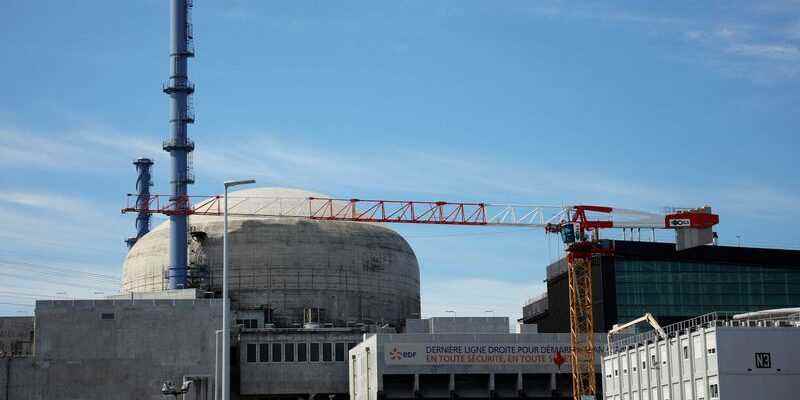At a sprawling nuclear site in northwest France, a banner next to a crane and a water tank still under construction confidently states: “Last straight line for a safe and secure start of Flamanville 3” .
EDF sees the end of the tunnel
“Today I feel an effervescence which begins to manifest itself on the ground, people see the last straight line. It’s the final sprint and each week, we feel this positive tension growing”, declared Alain Morvan, head of the Flamanville “EPR” European pressurized reactor project. “I think it’s good for French industry and good for EDF that we are finishing a site that has had problems,” he told Reuters this week during a rare press trip to the plant. .
Nestled at the foot of a granite cliff in Normandy overlooking the English Channel, the Flamanville 3 EPR project was designed to be EDF’s flagship power plant – a safer, more powerful and more sustainable nuclear reactor that would replace its aging fleet and would stimulate French nuclear exports. But it has become the symbol of its shortcomings and an embarrassment for the government, which owns 84% of EDF and is betting on nuclear power to mitigate the impact of a European energy crisis aggravated by the prospect of a sudden gas exit. Russian.
The Flamanville power station, which when fully operational will produce enough energy to run a city like Paris for a year, was originally expected to cost 3.3 billion euros and come into service in 2012. It is now due to start loading fuel, one of the last steps before starting a plant, in the second quarter of 2023, and at the latest tally the estimated cost has risen to 12.7 billion euros. The delay was partly due to faulty welds in the reactor circuitry and company officials said this week they were reasonably confident they could meet the latest deadline.
Of the 3,000 people currently working on the project, 800 are focused on repairing welds – about 50 out of 122 still need to be repaired.
“I want to believe that we have analyzed the situation well enough to avoid any further surprises,” Mr Morvan said.
European neighbors are also paying attention. EDF is building a new EPR plant in Britain, which has also been hit by delays and cost overruns. And France was the region’s biggest net exporter of electricity last year, supplying countries like Italy and Germany.
All options are on the table to save EDF
The fact that EDF officials are able to meet the 2023 timetable set in January for Flamanville is one of the few pieces of positive news coming from the energy giant which has been struggling for several months. EDF has faced many problems this year, prompting the government to consider outright nationalization and delisting of the company in order to have full control over an impending restructuring, possibly through a minority shareholder buyout, sources told Reuters.
Half of its nuclear reactors in France are out of service partly due to corrosion problems, as energy prices soar due to inflation, supply chain problems and fallout from sanctions against Russia.
In addition, the debt-ridden group has been forced to buy electricity at record prices and resell it to low-cost rivals, in accordance with the energy price cap set by the government to protect French consumers from the rise in the cost of living.
EDF has previously said it expects an 18.5 billion euro drop in core profits this year due to production losses, in addition to another loss of 10.2 billion euros. due to energy price cap measures.
A capital increase of 3 billion euros, largely financed by the State, was carried out at the beginning of the year. This week Finance Minister Bruno Le Maire said all options were on the table for EDF when asked about full nationalisation, giving his actions a rare boost.
Two weeks before Russia invaded Ukraine, President Emmanuel Macron announced a 52 billion euro plan for EDF to build at least six new EPR reactors, putting nuclear energy at the heart of the will of France to achieve carbon neutrality while strengthening its energy security. Last year, France derived 69% of its electricity production from atomic energy.
“The general opinion on EDF is improving due to a series of positive signals and comments from the French authorities on the growing potential for nationalization,” said Nicolas Bouthors of AlphaValue. “A minority buyout at a significant premium to current value is once again attracting speculative interest from investors after they dumped the stock due to operational and regulatory issues.”
